Heating Effect of Electric Current-
|
When an electric current is passed through a conductor, it becomes hot and its temperature starts rising.
This is called as heating effect of electric current or Joule’s heating effect. |
- Here, electric energy converts into heat energy.
- Various appliances such as geyser, iron, heater etc work on this basis.
Cause of Heating-
When a potential difference is applied across the ends of a conductor,
- Its free electrons get accelerated in the opposite direction of the applied electric field.
- The free electrons gain additional kinetic energy apart from the thermal kinetic energy.
But the speed of electrons does not increase beyond a constant drift speed because electrons collide frequently with the positive metal ions.
- The kinetic energy gained by the electrons during the intervals of free acceleration between collisions is transferred to the metal ions at the time of collision.
- The metal ions begin to vibrate about their mean positions more and more violently.
- Thus, average kinetic energy of vibrations of metal ions increases which show up in the form of increased temperature of the conductor.
Obviously, the electrical energy supplied by the source of emf is converted into heat.
Joule’s Law of Heating-
Consider-
- A conductor of resistance R is connected across a source of emf.
- The source maintains a potential difference V between its ends and sends a steady current I.
This is shown below-
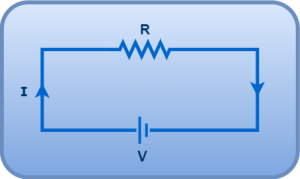
According to Joule’s law of heating, the amount of heat produced in the conductor is-
- directly proportional to the square of current (I)
- directly proportional to the resistance of conductor (R)
- directly proportional to the time (t) for which the current flows through the conductor
Thus,
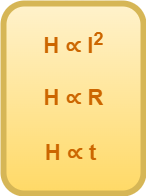
On combining, we get-

(Formula-01)
Other Forms-
By Ohm’s law, substituting I = V / R in Formula-01 and solving, we get-
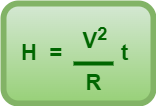
(Formula-02)
By Ohm’s law, substituting R = V / I in Formula-01 and solving, we get-

(Formula-03)
Thus, the amount of energy dissipated as heat in a conductor in time t is given by-

Joule’s Law of Heating Graphs-
Graph-01:
If R and t are constants, then H ∝ I2
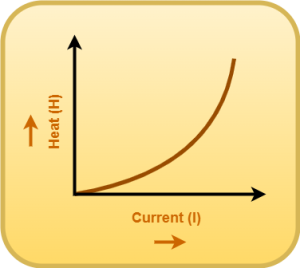
Graph-02:
If I and t are constants, then H ∝ R
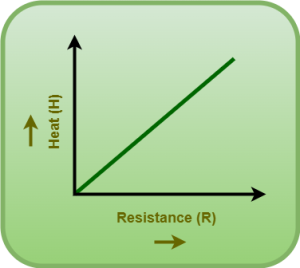
Graph-03:
If V and t are constants, then H ∝ 1/R
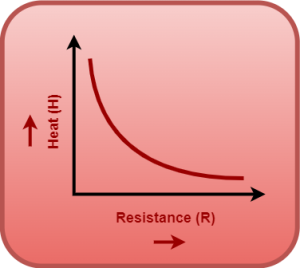
Graph-04:
If V, I and R are constants, then H ∝ t
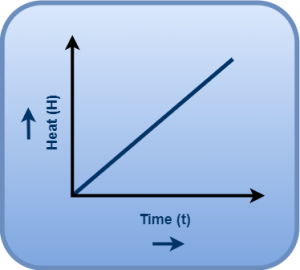
Test Your Concepts-
Quiz on Joule’s Law of Heating
Next Article-
Get more notes & other study material of the Chapter Current Electricity.

